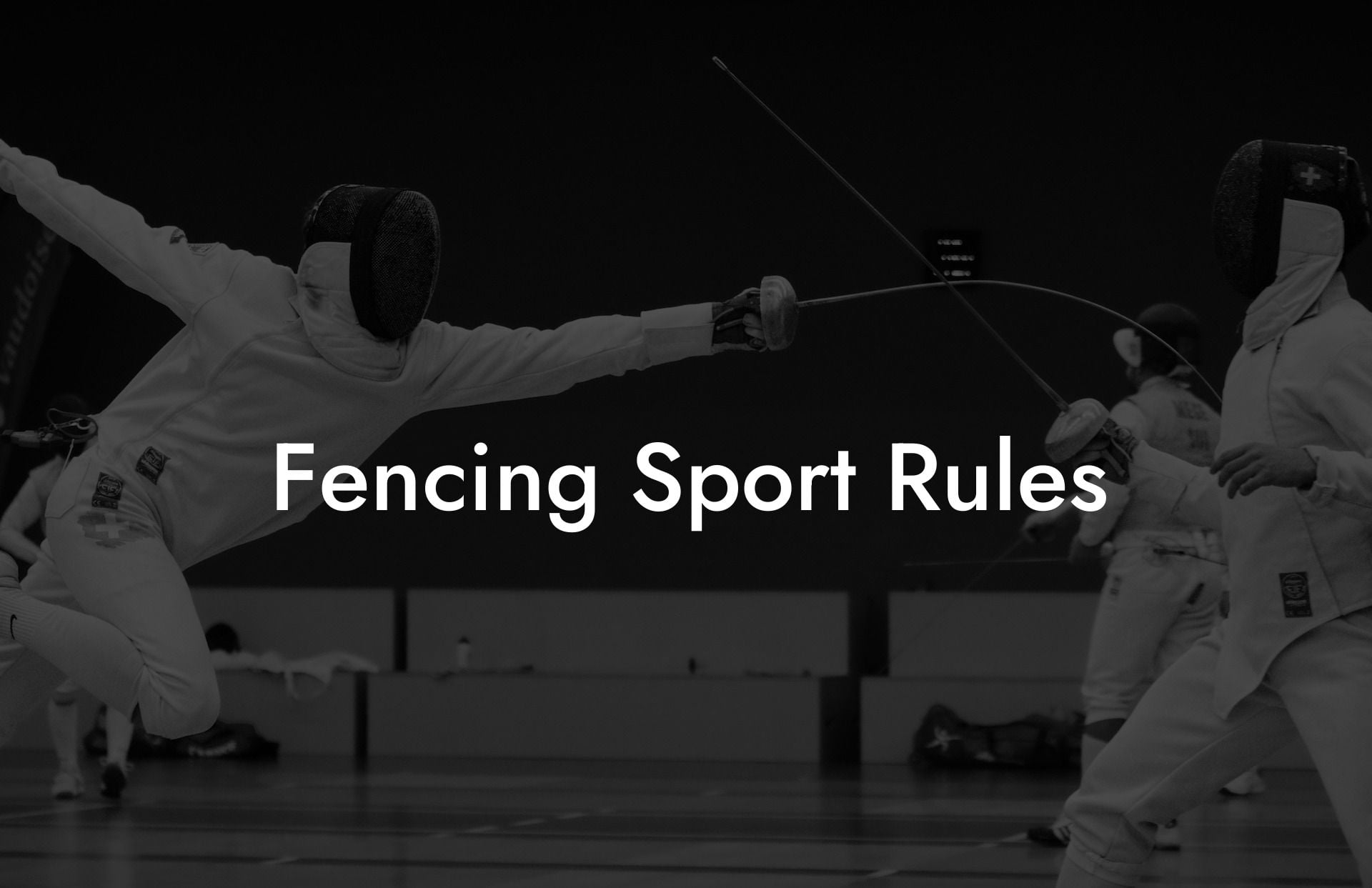Have you ever been intrigued by the elegant and strategic sport of fencing? Do you want to learn the fencing sport rules? Get ready to dive into the captivating world of fencing, as we break down the sport's rules, strategies, and its three unique disciplines. We will also provide a realistic example for you to experience a taste of what a real fencing match is like. So, let's get started!
Three Disciplines of Fencing
Fencing has three distinct disciplines, each with its own weapons and rules: Foil, Epee, and Sabre. Understanding these differences is essential for grasping the basics of the sport.
Foil
- Lightweight thrusting weapon
- Target area: torso, excluding arms and legs
- Right of way rules apply, meaning you must establish priority to score a point
Epee
- Thrusting weapon, heavier than foil
- Target area: the entire body
- No right of way rules, meaning the fencer who hits first scores a point
Sabre
- Cutting and thrusting weapon
- Target area: everything above the waist, excluding hands
- Right of way rules apply
Basic Fencing Sport Rules
Now that you know the three disciplines, let’s delve into some key fencing sport rules applicable to all of them:
Equipment and Safety Rules
- Protective gear, including mask, jacket, glove, and plastron must be worn
- Weapons must be inspected before competition for safety and compliance
- Any intentional removal of protective gear during a bout results in a penalty
Scoring and Timing
- Standard individual bouts last for three periods of 3 minutes each, or until one fencer scores 15 points
- Teams compete in nine 3-minute bouts, or until a team reaches 45 points
- A valid point requires contact with the target area using the weapon's tip or edge, depending on the discipline
- In foil and sabre, the fencer must establish right of way to score a point; in epee, the first to hit scores a point
Penalties
- Yellow card: warning for minor rule violations like unintentional body contact or crossing the boundary
- Red card: point for the opponent for repeated violations or more serious offenses, like intentional body contact or unsportsmanlike conduct
- Black card: expulsion from the competition for severe offenses like violence or cheating
Fencing Sport Rules Example:
Imagine a sabre bout between two fencers. Both are wearing the required protective gear and meet in the center of the strip, which is the narrow playing area.
They salute each other and the referee, before getting into their "en garde" positions. The referee signals the beginning of the bout with "Allez!" and Fencer A initiates an attack with a rapid advance, followed by a lunge to Fencer B's chest.
Fencer B reacts quickly, parrying the attack and performing a counterattack to Fencer A's arm. Given that sabre follows right of way rules, Fencer B scores the point since they successfully defended themselves and landed an attack afterward.
The bout continues, displaying a fascinating exchange of attack, defense, and strategy until one fencer reaches 15 points or the time runs out.
There you have it – a comprehensive guide to understanding fencing sport rules and the distinguishing characteristics of its three disciplines. With this newfound knowledge, why not share this article with friends, explore other guides on Anchorage Fencing Club, or even consider giving this exhilarating sport a try? Whether you're a beginner or a seasoned pro, there's always something new to learn and enjoy in the world of fencing!













